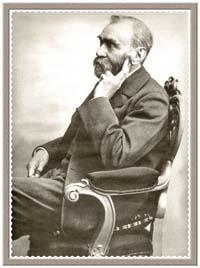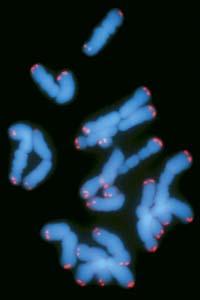Nobel Prizes, as new as the former

The signatories recognize that the Nobel Prizes are still of great importance and influence today. However, they believe that the scientific areas of special relevance at present are not considered in the Nobel Prize. Therefore, they propose to renew the prizes.
In particular, Solhman has requested the creation of the Environmental and Public Health Awards, as well as the extension of the Prize for Physiology or Medicine so that other fields of the life sciences have a place, such as basic biology and behavioral sciences.
Anyway, at least this year, the pioneers of some technologies that we use on a daily basis will receive the Nobel Prize in Physics, while that of Chemistry is of biochemical type. And it is not the first time that the jury maintains its flexibility with the categories, the 2007 Nobel Peace Prize is a clear example: He was received by IPCC and Al Gore for his work in the fight against climate change.
Yes, as always, in the first days of October the names of the Nobel Prize winners were communicated, and as always, the award ceremony will be on December 10.

Novel of Physiology or Medicine for those who found chromosome protectors
H. H. Elizabeth. Blackburn, Carol W. Greider and Jack W. Szostas Szostas
"To discover how telomeres and the enzyme telomerase protect chromosomes"
The discoveries of the winners of the Nobel Prize in Physiology or Medicine are the result of collaboration. Precisely, in the early years of his career, Blackburn discovered that at the end of the chromosomes of the unicellular organism Tetrahymena had repeatedly repeated a sequence. When he published the study, Szosta contacted Blackburn so that he could relate to the experiments he was carrying out with yeasts.
In this way, a joint experiment was conducted in which it was discovered that the telomere of Tetrahymena protected the chromosome from the yeast. Although both were very different, they concluded that they had the same mechanism at the base. The research, published in 1982, has shown that the sequence of telomeres is characteristic in most organisms, from amoebas to humans.

Telomeres and cell life
As explained in the press release of the Nobel Academy, these discoveries are of vital importance, since the length of telomeres is related to the length of life of the cell. Therefore, the researchers consider that telomeres have a great importance in the aging of organisms and also in cancer. In fact, cancer cells are immortal and some researchers have seen that in these cells telomase has a great activity. What's more, treatments are currently being tested based on the destruction of telomerase to fight cancer.
In addition, some hereditary diseases are the result of telomerosis defects, such as congenital aplastic anemia. Thus, the discoveries of Blackburn, Greider and Szostak have allowed us to better understand the life of cells and the appearance of diseases. They have also opened the way to develop new therapies.
The optical fibers and the eyes of digital cameras, protagonists of the Physics Novel
Charles K. Kao, and Willard S. Boyle and George E. Smith Smith

The first for his "revolutionary achievements in the transmission of light in fibers for optical communications" and the second for "creating CCD image sensor"
In the world there is a billion kilometers of optical fiber. Through these fibers are transported images, texts, videos, audios and many data at high speed through the light. In fact, optical fibers constitute a large part of the current communications networks.
The invention of the laser at the beginning of the 1960s was an important step in the development of optical fibers, as it allowed to encode information through light. But the transportation of that light was something else. There were optical fibers, but with those of that time only 1% of the light remained every 20 meters.
In fact, Charles Kuen Kao was investigating how to improve this problem with a clear objective: to reach at least 1% of the light injected into the fiber at one kilometer. In 1966 he presented the result of his research: the key to the manufacture of fibres with the purest glass possible.
A few years later, researchers at the American glass factory Corning Glass Works were able to manufacture ultra-pure fibers.

Electronic eye
The development of digital cameras is not inferior to that of optical fibers. And the CCD (Charged Coupled Device) sensor designed by researchers Willard Boyle and George Smith has been instrumental in this development. Because the CCD is the eye of digital cameras.
The CCD is a silicone plate filled with photosensitive cells. By hitting the light that enters through the lens on this plate, the CCD transforms the light intensity that each cell receives into an electrical load. There is an electrical change that can become a binary number, that is, digitized. In this way, each cell takes the information from a point of the image and with it can form a pixel of the digital photo.
Thanks to the CCD, a new era for photography began and, in general, for the image. And this has also had a great influence on different areas of science. The Hubble telescope, for example, is the technology that allows to extract these spectacular images from the universe.
Chemical Novel for those who studied the atomic structure and the functioning of the ribosomes

Venkatraman Ramkrishnan, Thomas A. Steitz and Ada E. Youth Youth Youth Youth
"for investigating the structure and functioning of the ribosomes at atomic level"
Ribosomes participate in the synthesis of proteins. The genetic code necessary for protein synthesis is collected by a messenger of RNA, which with this information and the amino acids provided by the transfer RNA molecules form protein chains. They are the essential proteins to live.
The three winners of this year have investigated the structure and functioning of the atom to atom ribosomes, using X-ray crystallography. This technique consists of the emission of X-rays against crystallized ribosomes. These X-rays when colliding with the ribosome are dispersed, representing millions of points in the eye of digital cameras or in the CCD detector. Analyzing this image composed of millions of points, researchers can know where each atom is located in the ribosome. That is, they can know the atomic structure of the ribosomes. In addition, the exhaustive knowledge of the atomic structure is essential to know the functioning of the ribosomes.
Thomas Steitz managed to determine the atomic structure of the great subunit of the ribosome of the archaeologist Haloarcula marismortui. D. D. Ada For their part, researchers Yonath and Venkatraman Ramakrishan obtained the structure of the small subunit of the ribosome of the Thermus thermophilus bacteria.

Search for new antibiotics
On the other hand, the exhaustive knowledge of the structure and functioning of the ribosoma opens new ways. The Swedish Academy has highlighted the importance of the discovery for the development of new antibiotics. In fact, many antibiotics are associated with bacterial ribosoma, preventing its protein production. In addition, many of these bacteria have developed resistance to these drugs. Therefore, it is essential to find new ways.
In the future, and after the steps taken by these three researchers, better antibiotics can be designed in the fight against bacteria. In fact, the three have focused on investigating how antibiotics are associated with ribosomes, and there are already organizations that use ribosomal structures to develop new antibiotics.





